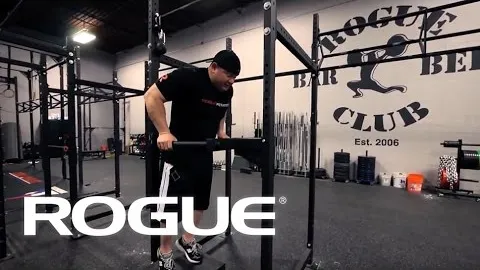
The Partial Range of Motion Dip exercise is a challenging upper body exercise that targets the muscles of the chest, shoulders, and triceps. This exercise is performed using parallel bars or dip bars, and it involves lowering the body between the bars and then pushing back up to the starting position. However, instead of performing the full range of motion, the Partial Range of Motion Dip exercise focuses on a smaller range of motion to increase intensity and target specific muscle fibers.
The Partial Range of Motion Dip exercise offers several benefits for both beginners and advanced fitness enthusiasts. Here are some of the key advantages of incorporating this exercise into your workout routine:
Increased Muscle Activation: By focusing on a smaller range of motion, the Partial Range of Motion Dip exercise enables you to engage specific muscle fibers more effectively. This increased muscle activation helps to develop strength and size in the chest, shoulders, and triceps.
Progressive Overload: This exercise allows for easy progression by gradually increasing the range of motion over time. As you become stronger and more comfortable with the exercise, you can gradually extend the range of motion to challenge your muscles further.
Saves Time: Compared to performing full range dips, the Partial Range of Motion Dip exercise allows you to target the muscles more efficiently, saving you time during your workouts.
Joint-Friendly: Since the Partial Range of Motion Dip exercise does not involve going through the complete range of motion, it puts less stress on the joints, making it a suitable exercise for individuals with joint issues or those recovering from injuries.
Follow these step-by-step instructions to perform the Partial Range of Motion Dip exercise correctly:
Position your hands: Stand between the dip bars and grip each bar with palms facing down. Your arms should be fully extended, and your feet should be slightly off the ground, resting on the dip bar's platform.
Lower your body: Slowly lower your body by bending your elbows while keeping your torso upright and your chest out. Go down until your upper arms are parallel to the ground, or until you feel a comfortable stretch in your chest, shoulders, and triceps.
Push back up: Press through your hands and push your body back up to the starting position. Keep your elbows slightly bent at the top to maintain tension in the muscles.
Repeat the movement: Perform the desired number of repetitions, focusing on maintaining control and proper form throughout the exercise.
To add variety and challenge to your workout routine, consider incorporating the following variations of the Partial Range of Motion Dip exercise:
Weighted Partial Range of Motion Dips: Once you have mastered the bodyweight version of the exercise, you can add extra resistance by using a weight belt or holding a dumbbell between your legs.
Elevated Partial Range of Motion Dips: By placing your feet on an elevated surface such as a bench or step, you can increase the difficulty of the exercise and target different muscle fibers.
Superset with Push-Ups: To create an intense upper body workout, try supersetting Partial Range of Motion Dips with traditional push-ups. This combination will challenge your muscles and help you achieve greater overall strength.
While the Partial Range of Motion Dip exercise is generally safe for most individuals, it is important to keep the following safety considerations in mind:
Proper Form: Maintain proper form throughout the exercise to prevent unnecessary strain on your joints and muscles. Avoid swinging or using momentum to complete the movement and focus on controlled, deliberate movements.
Start with a proper warm-up: Before starting any exercise, it is crucial to warm up your muscles and joints to reduce the risk of injury. Perform a few minutes of light aerobic exercises, such as jogging or jumping jacks, followed by dynamic stretching of the shoulders, chest, and triceps.
Gradually increase the intensity: If you are new to the Partial Range of Motion Dip exercise, start with a limited range of motion and gradually increase it as you become more comfortable and stronger. Listen to your body and avoid pushing yourself too hard, especially if you are experiencing any pain or discomfort.
Consult a professional: If you have any underlying health conditions or previous injuries, it is advisable to consult with a fitness professional or healthcare provider before attempting the Partial Range of Motion Dip exercise.
In conclusion, the Partial Range of Motion Dip exercise is an effective upper body exercise that targets the muscles of the chest, shoulders, and triceps. By focusing on a smaller range of motion, this exercise allows for increased muscle activation and progressive overload. Incorporating variations and following safety considerations will help you make the most out of this exercise and achieve your fitness goals.
If you're looking for a gym, fitness club or yoga studio, you've come to the right place.
You can find information about gyms in your area. Browse catalog of gyms and find gyms with classes which are you looking for.
On gym page you can find simple information like address, phone or website. You can find list of available classes. You can check availability of personal training or small group classes. On place page you can also see information about open hours.
You can find gyms near you with amenities, courts, studios and equipments.
Use our map to find gym at your city or district.
In Gym Navigator you can find list of exercises with movies for many body parts.
You can browse exercises catalog and find exercises the best of you.
You can also find exercises grouped into workout plans, which you can use to improve you body. Each routine show you exercises one by one and give you possibility to count you progress and count down rest time.